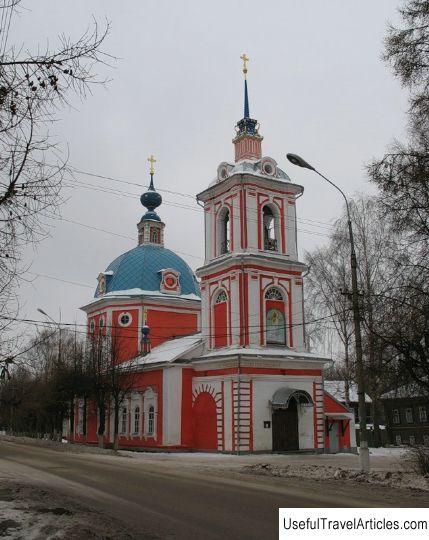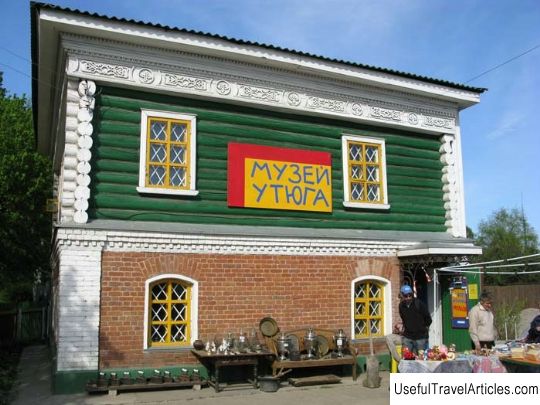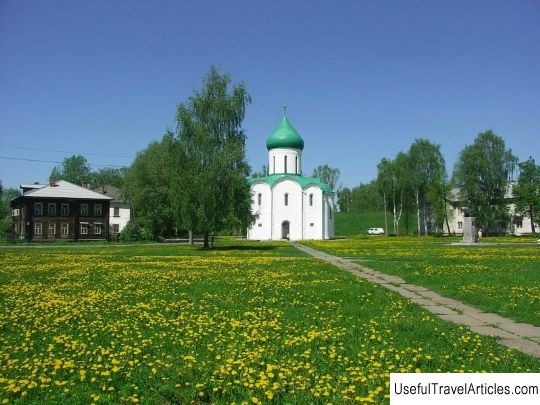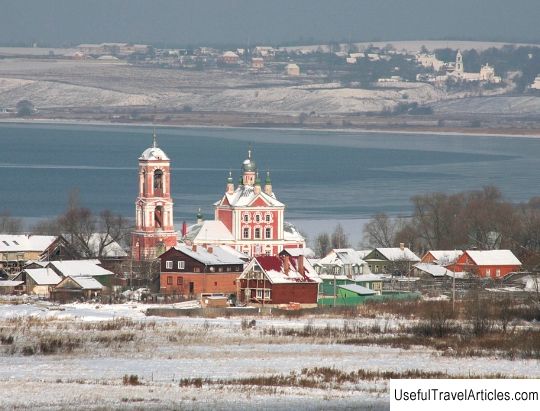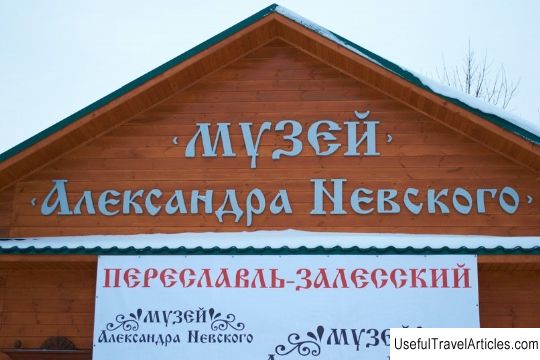Blue stone description and photo - Russia - Golden Ring: Pereslavl-Zalessky
Rating: 7,7/10 (1651 votes) 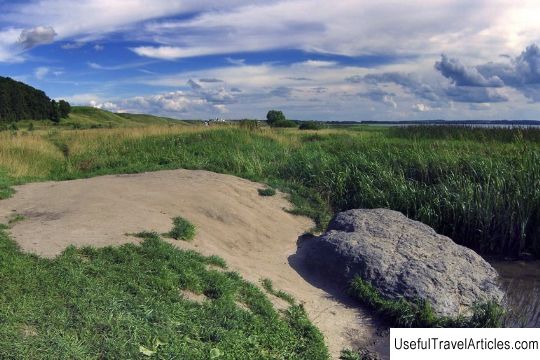
Blue stone description and photo - Russia - Golden Ring: Pereslavl-Zalessky. Detailed information about the attraction. Description, photos and a map showing the nearest significant objects. Photo and descriptionNot far from the town of Pereslavl-Zalessky, on the coast of Lake Pleshcheevo, where the architectural monument "Kleshinsky complex" is located today, there is a huge boulder - Blue Stone, which is a natural monument. Currently, the stone has a gray-blue color and gradually, slowly sinks into the ground. Since ancient times, this stone has been called miraculous. According to the statements of a number of living old-timers, among whom there are numerous and most diverse legends passing from generation to generation, if you stay on this stone for a while, you can heal from many varieties of diseases, and infertile women can have children. The history of the Blue Stone began in the distant past of our country. Today historians, cooperating with archaeologists, they proved that the first settlement on the coast of Lake Pleshcheevo was isolated about two thousand years ago. The first settlers in this area were pagan Finns, who, surprisingly, did not accept bloody sacrifices. This area of residence of the Finns was attractive because it was here that the mountain was located, the height of which reached 30 meters above the water level, because from this point all the surrounding surroundings were perfectly visible. During the period when the tribe inhabited the mountain, the Blue Stone already existed and was located at its very top. It is clear that the pagan settlers deified a huge boulder and made a small flat area around it, and on its edge they built a special pagan prayer house. Over time, these territories, near Lake Plescheevo, began to be settled by the gray Slavs as the Finns left this area. The Slavs who came were also pagans, but they worshiped Yarila - their pagan god, but at the same time, they preserved the former shrine of the people that preceded them. Near the stone was built an impressive settlement, in which the Slavic pagan tribes lived; it was named Ticks. Thus, it was this territory that served as the starting point for the emergence of the future city of Pereslavl-Zalessky. The blue stone throughout its long history has always been famous for its incredible strength, which has come down to the present day. During the period of the existence of Russia, when the Orthodox faith was already firmly rooted, the population of the Pleshcheev Lake regions, including Orthodox Christians, did not stop worshiping the extraordinary boulder and continued to deify it. During this period of time, Orthodox priests, preaching almost every time, tried to convey to the local residents that not a miraculous, but an unclean force lives in the stone, which poisons the souls of those who worship and deify it. It should be noted that no warnings and reproaches could stop people from worshiping the empowered stone. Even today, a large number of people come to the Blue Stone, leaving their offerings at its foot and asking for help, recovery and praying for the fulfillment of desires. The time has come, and local priests insisted on throwing the stone off the cliff - everything happened according to the conceived plan. Thus, the stone was already at the very foot of the mountain, but even here a large number of people gathered, who, as before, they worshiped the stone. In the first years of the 18th century, representatives of the Orthodox faith suggested throwing a boulder into a pit and filling it with earth from above, which was done by order of Vasily Shuisky. Later For some time, the fishermen who came to these territories were surprised to notice that the stone was still in its place. No one could understand exactly how the 12-ton boulder ended up on the surface of the earth. In 1788, the construction of a temple on the site of a boulder was begun, so it was decided to lay it in the foundation next to the bell tower under construction. In the winter season, when the lake was covered with ice, they wanted to transfer the Blue Stone to the ice, but the ice could not stand it and the stone ended up at a depth of 5 m. A year later, local fishermen noticed that that the stone begins to "get out" to its former place, and today it lies at its previous location, although it sinks more and more into the ground.        We also recommend reading Aukstaitijos nacionalinis parkas, description and photo - Lithuania Topic: Blue stone description and photo - Russia - Golden Ring: Pereslavl-Zalessky. |
